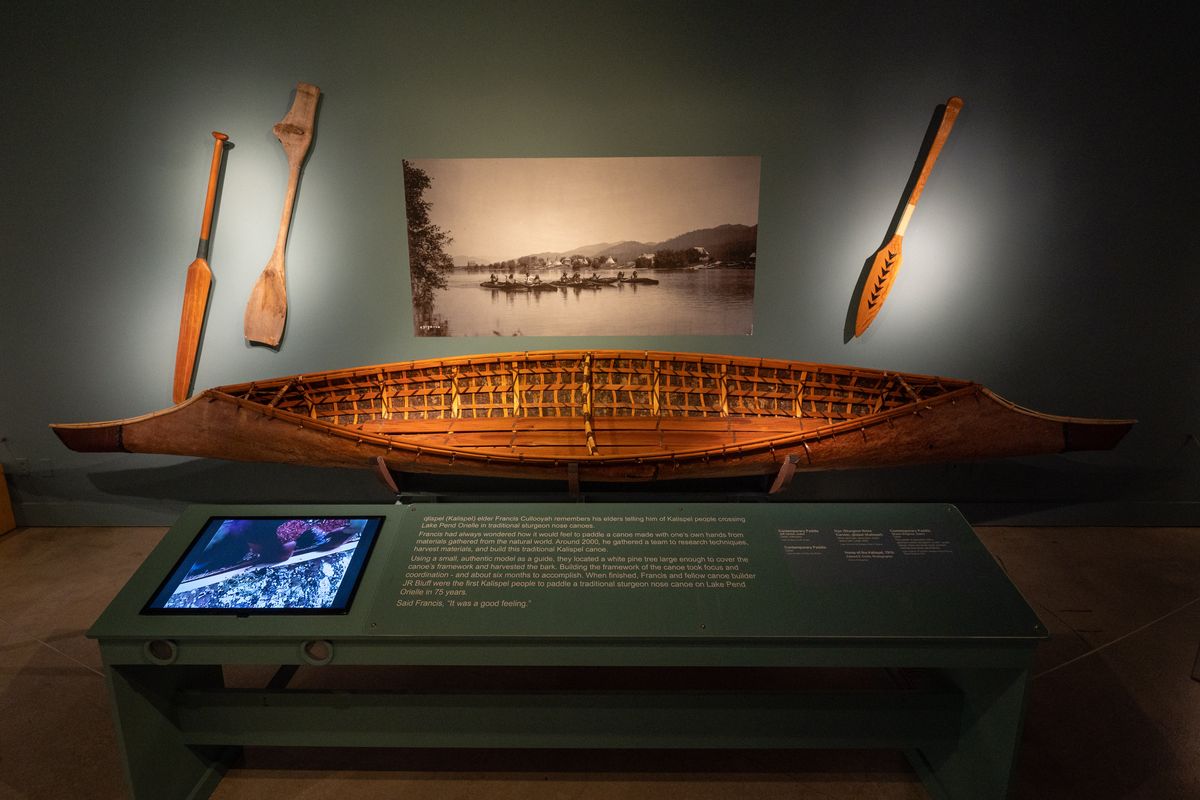MAC exhibit ‘Awakenings’ celebrates canoe culture, tribes and salmon

Celebrating the resurgence of canoe culture among the Plateau tribes of the Upper Columbia, the Northwest Museum of Arts and Culture presents “Awakenings: Traditional Canoes and Calling the Salmon Home.”
Now, after a year spent on hold for the pandemic and more than three years of planning, the exhibit is officially open and will remain on display through next August.
Taking inspiration from the documentary “United by Water,” the MAC’s “Awakenings” exhibit will showcase the history and recent revival of the annual Columbia River Canoe Journey and the First Salmon Ceremony, a religious event celebrating the salmon that once inhabited the Columbia River.
“The emphasis is going to be on how these dugouts were created as well as … salmon recovery efforts and what needs to go into that to really getting them reintroduced in the Upper Columbia,” said Nez Perce member Tisa Matheson, the museum’s American Indian Collections specialist.
With the support of the Upper Columbia United Tribes, tribal elders on the Spokane and Colville reservations have been working to bring canoe building back into their cultures and salmon back to the Columbia.
Matheson and co-curator for the exhibit Valerie Wahl have collaborated throughout with Marc Gauthier and John Sirois, two UCUT representatives directly involved in the canoe-building project as documented in “United by Water.”
For Sirois, helping to organize the MAC exhibit has been another important step toward raising awareness and bringing the tribes back to their “big river,” that is, the Columbia.
“We dreamed of getting our peoples … back on the river with their canoes,” Sirois said.
So many passed-down stories, he explained, mention making alliances up and down the rivers for political and cultural reasons.
“Those canoes were essential for our survival and connection to the Columbia River,” he said.
As the documentary explains, finding the kind of wood necessary for building traditional dugout canoes, a particular kind of cedar, was a major roadblock.
But in 2015, a timber sale on the Quinault Reservation and the purchase of six old-growth cedars – the largest of which, at 690 years old, weighed approximately 28,000 pounds – made it all possible.
It was “the first step that brought forward the canoes, the canoe journey and a reawakening of our river culture and connections,” Sirois said.
Once acquired, the logs were distributed among the tribes. Responsible for carving and, eventually, paddling the six canoes along the Columbia, the groups that formed around each canoe became known as “canoe families.”
In June 2016, more than 80 years after the last salmon swam in the upper Columbia, the canoe families took to the river, paddling from their respective homelands to the historic fishing and gathering site at Kettle Falls.
Continuing this annual trip, Sirois explained, is integral to realizing his dream of bringing not only the tribes but also the salmon back to the river.
“If we can come together to make sure that salmon come back to their historic spawning grounds, we will address water quality, temperature and quantity,” Sirois said. “People need to take away the level of direct connection … that their health depends on our shared environment.”
Two of these canoes used in the river journey, those owned by the Coville and Spokane tribes, will make up the centerpiece of the MAC exhibit.
Sirois hopes visitors will leave the exhibit with a new appreciation not only for the “big river” but also for “the river that they live next to.”